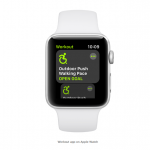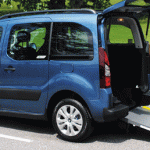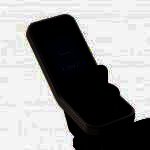Every so often we here of a new take on the traditional wheelchair design and generally speaking a single proto type is built and tested and the new fangled wheelchair design goes no further.
Now over to Japan, the home of innovative invention, where a new wheelchair concept has been developed which makes it far different to the traditional wheelchair that we see in various guises today.
What makes this new design altogether different is the seating position which requires the user to sit on it rather than in it and the rider adopts a position more like you would when riding a bicycle or a horse with one leg either side of the main body.
At first glimpse, this wheelchair design looks very strange but when you look in to the reasoning then it becomes clearer why this new style may be of benefit to some wheelchair users.
Japanese manufacturer Tmsuk has come up with the Rodem model, which puts the users in a higher forward mounted position and as Tmsuk claim makes it easier for a user to get on and off the wheelchair without the help of a carer.
Firstly we should point out that this is a powerchair or an electric wheelchair. Secondly we can announce that it will be available to a lucky few in the UK this year - 2018.
Having been in development since 2009, Tmsuks Rodem wheelchair has come a long way and is now ready for some real action. The makers claim that many everyday tasks are made so much easier by way of the users position on the wheelchair.
From brushing your teeth to eating at a table the Rodem attempts to make the experience easier by allowing the users body to be nearer the front of the wheelchair, thus nearer to the job at hand. Its seat is height adjustable allowing you to size uo to the job at hand with ease. The wheelbase of the Rodem is short, making turning in tight places far easier than other powerchairs.
Tmsuk’s Rodem mobility robot as it is sometimes referred to is already available in Japan and is gaining interest fast. At a cost of about 900,000 YEN or £6000 it is not cheap but does come with some very flash looks and will be available in the UK in a choice of 6 colours. Being Japanese and electric it also comes with a host of techno trickery including the ability to park it and call it back remotely from your smartphone !
Once the Rodem wheelchair has arrived in front of you the long sweeping handles allow you to reach forward to pull yourself on to the long saddle style seat. Once seated, you can then adjust your seat height to suit the next task at hand, raising or lowering it to allow you to be best suited to the job at hand. Then using a joystick controller you can move the Rodem wheelchair with ease much like controlling any other powerchair.
The seat can also be tilted forward, again to ensure that you are in the right position to make things easier. This also allows you to get closer to what you are doing without having to lean forward or cause discomfort.
When it comes to transferring yourself out of the wheelchair, again the handles are long and positioned to allow you to transfer yourself with ease. We know that this will not suit all wheelchair users and that levels of mobility vary enormously. But we can see some clear merits in its design and hope that it provides some benefits to users who decide to take up the Tmsuks Rodem electric wheelchair.






















